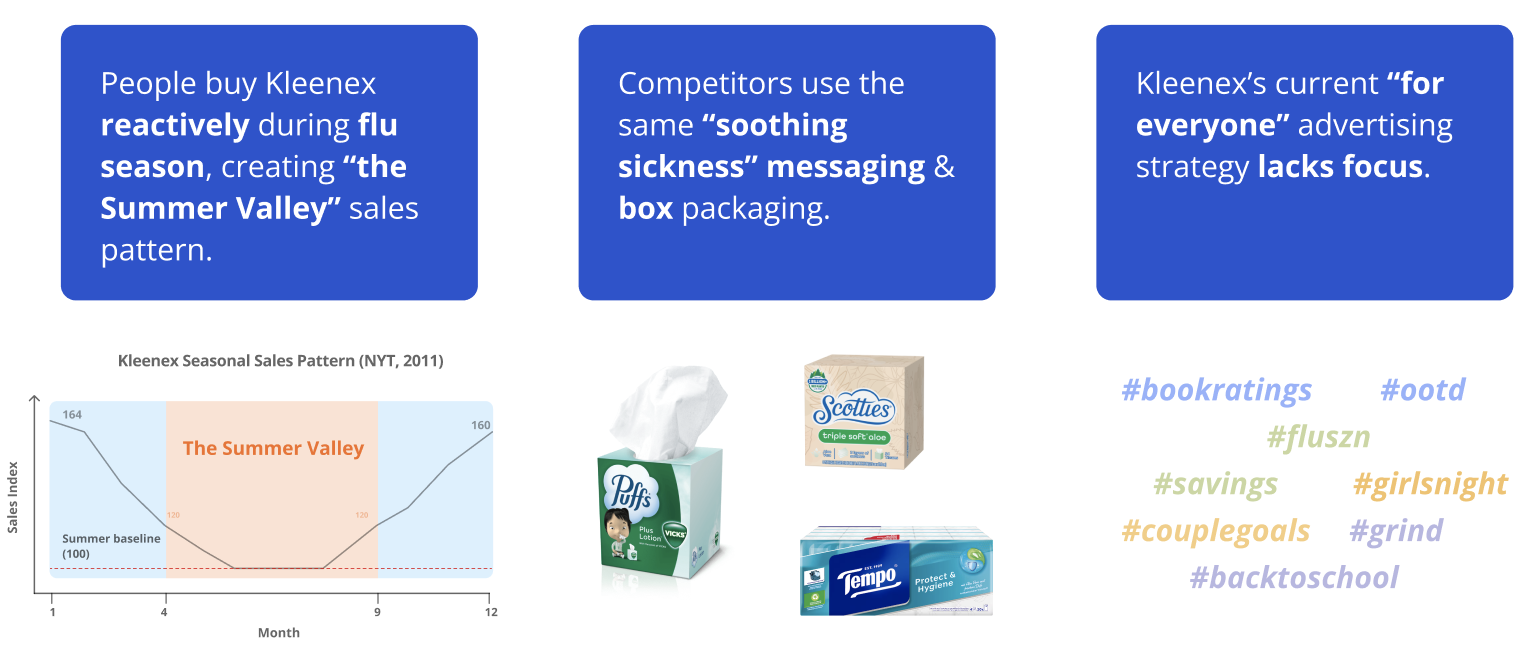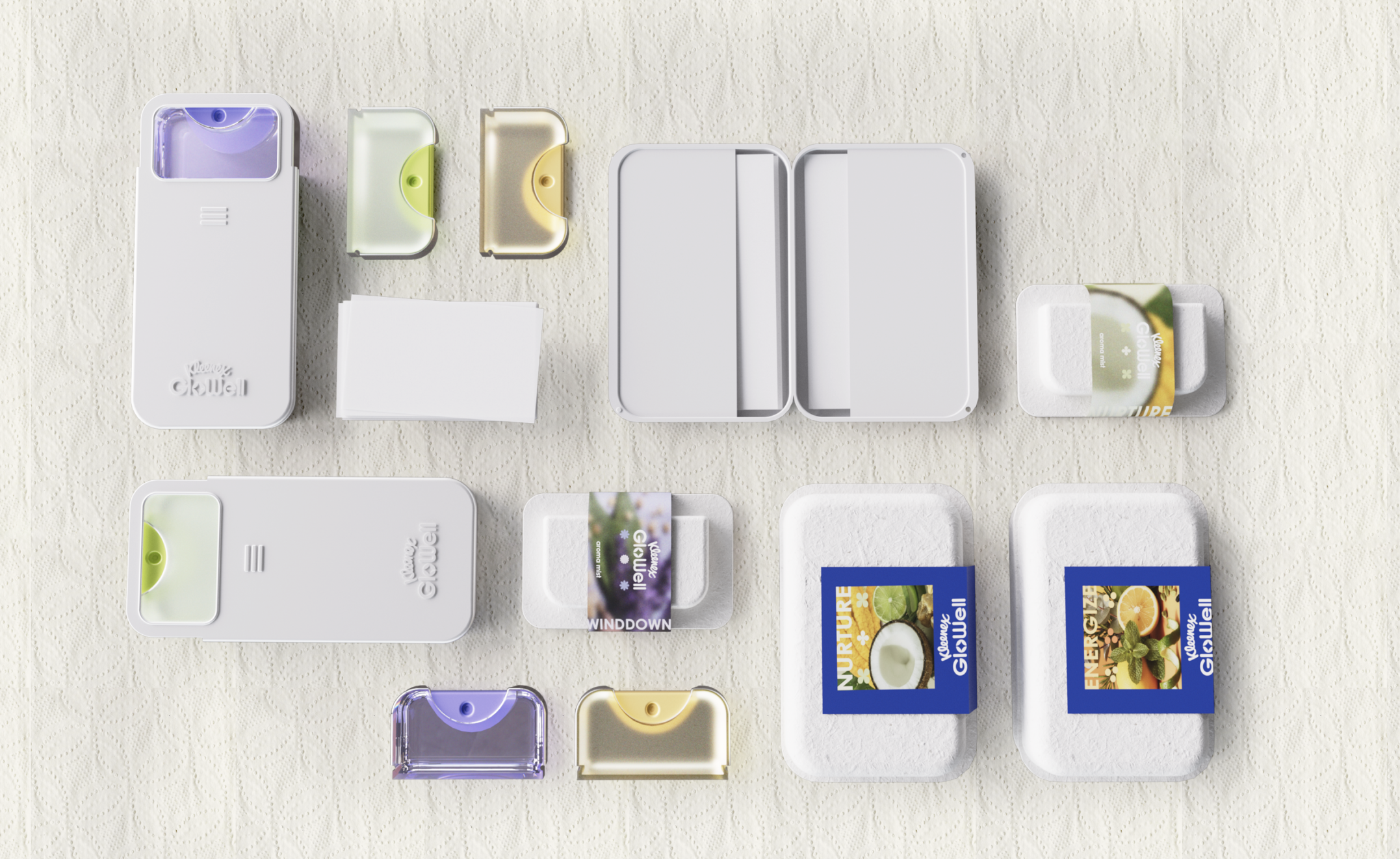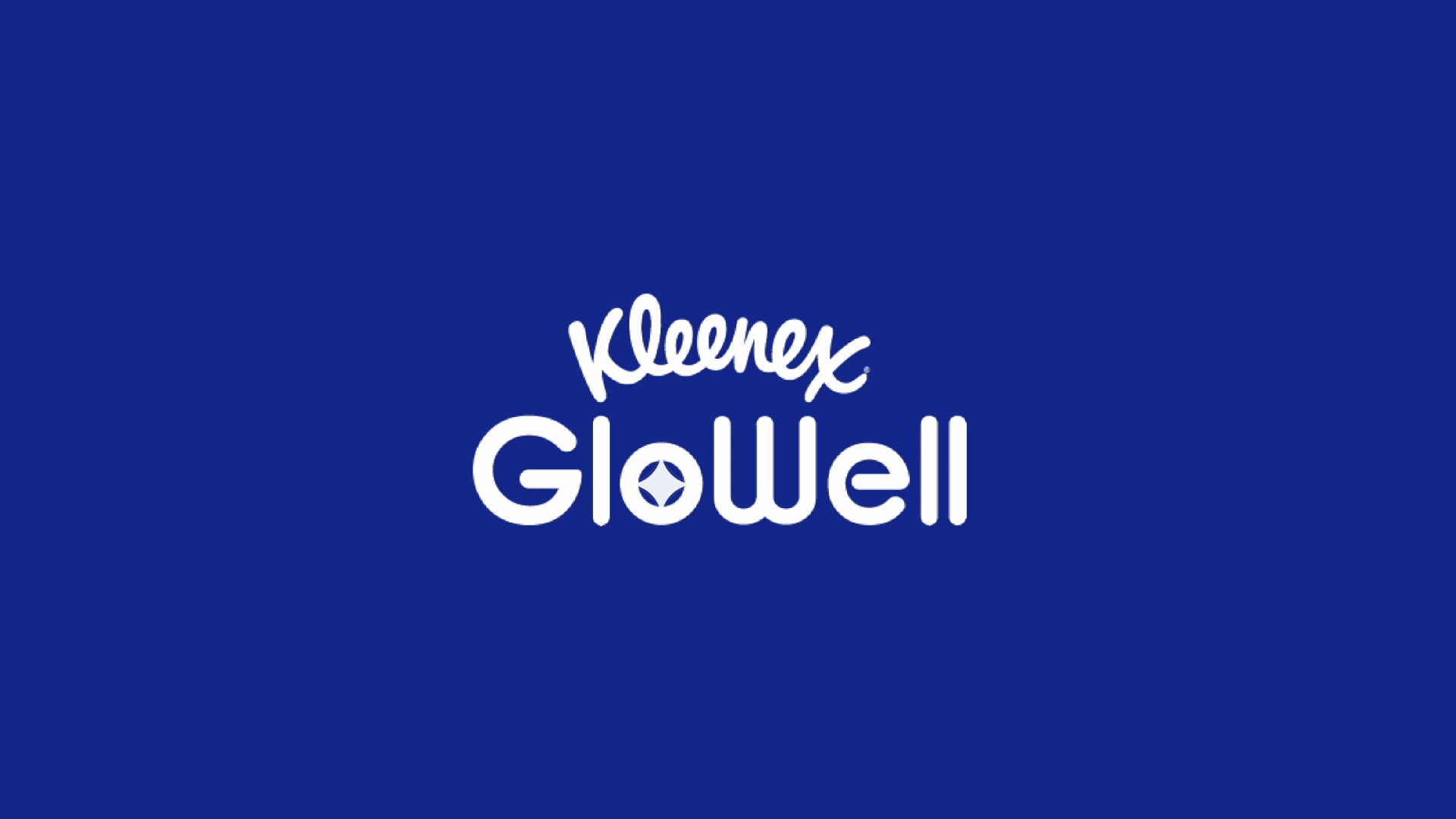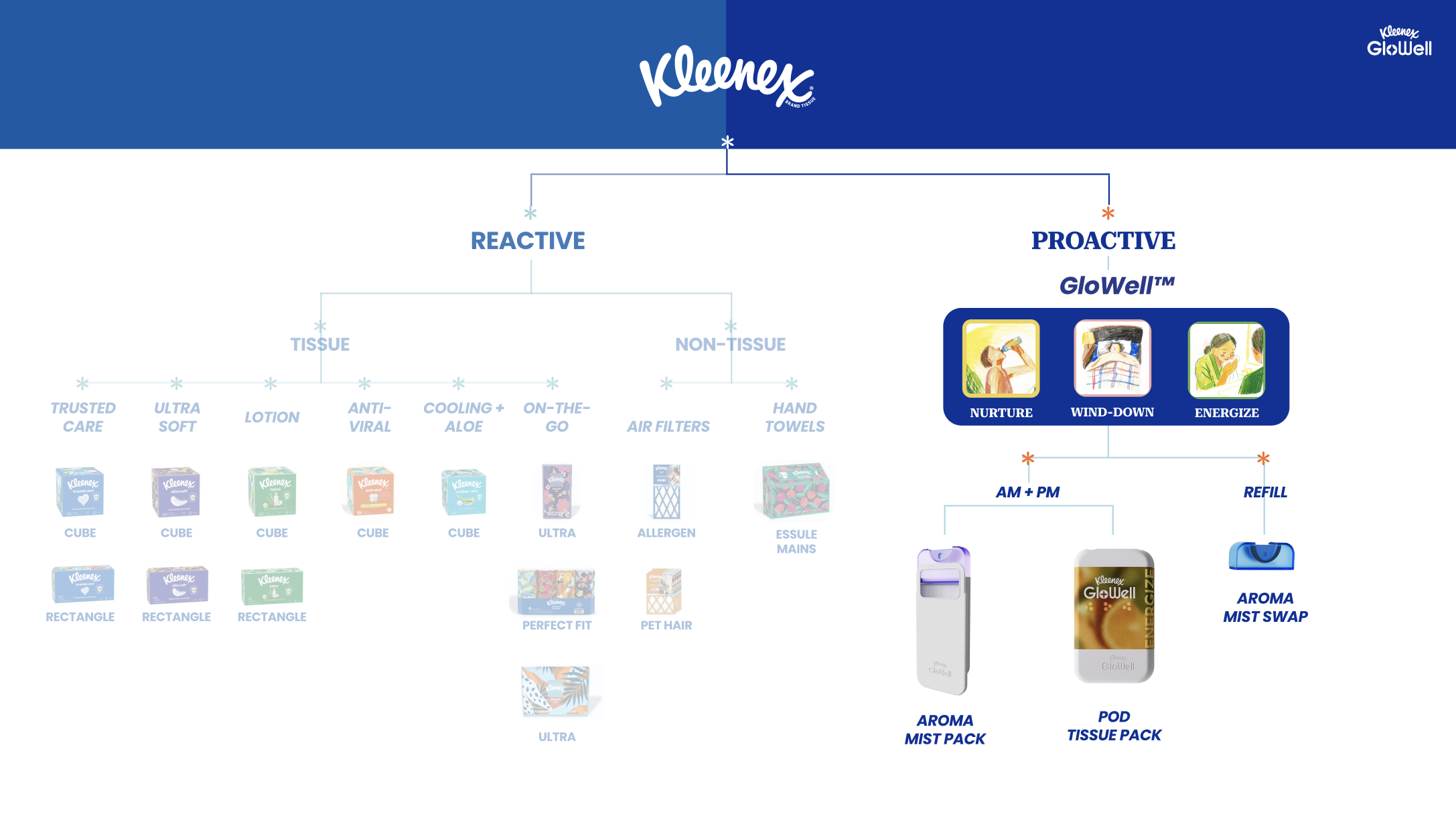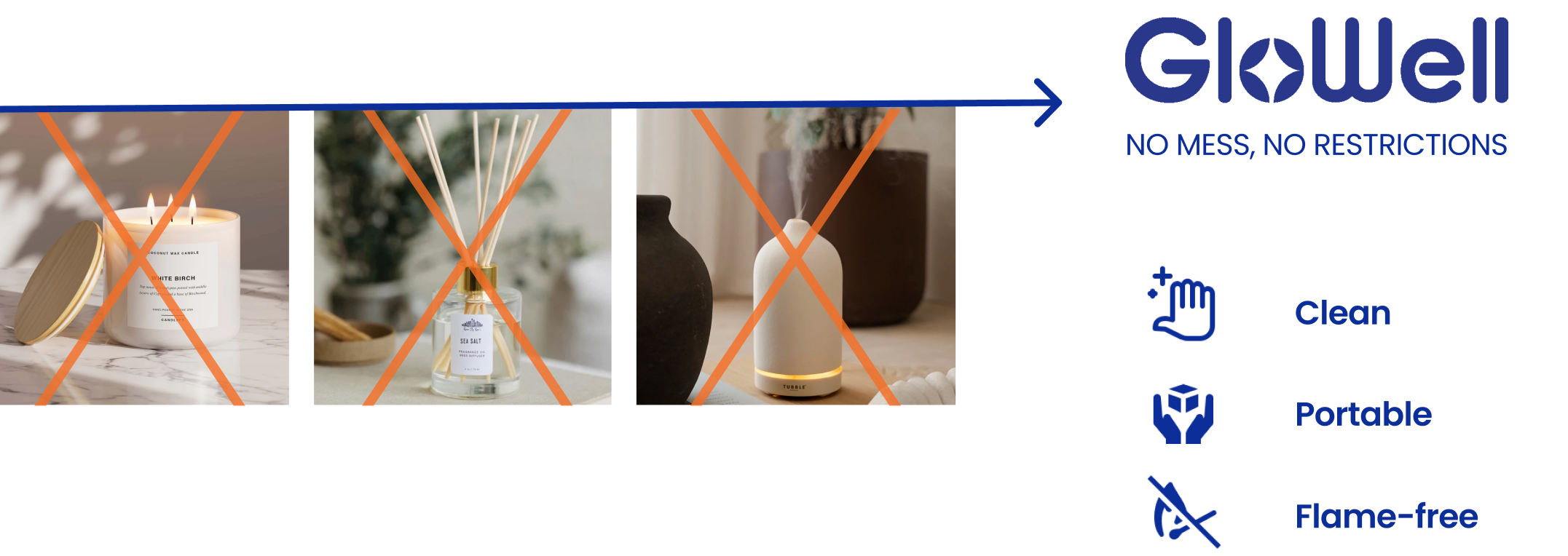
Overview
I designed a wellness franchise to transform Kleenex from a reactive sick-day product into a proactive lifestyle brand.
My Role:
Project Coordinator
UX Designer
Collaborators @ Harvard GSD:
Market Research: Lingxia Lu, Haolei Zhang
Pitch narrative: Victoria Bartoszewicz, Xiluva Mbungela
Product Design: Alex Limber, Robyn Wang, Jerry Zhang
UX Design: Chloe Ni
2D & 3D Visuals: Leah Bian, Anyang Zu
Timeline:
14 weeks, Fall 2025 (Currently in progress)
Academic Project @ Harvard Graduate School of Design
What I Did:
UIUX, Figma animation & prototype, AI image rendering
Design strategy, facilitate decision-making, track progress
Context
In June 2025, Kimberly-Clark decided to divest Kleenex due to weak profitability and eroding premium positioning. Why did this happen to the facial tissue category’s champion?
Kleenex is boxed into a narrow identity of “sickness“ that now limits its future.
Originally a beauty product for removing cold cream, Kleenex was repurposed by consumers as a disposable tissue for runny noses. The company leaned into this shift, fueling its growth into the facial tissue category champion, but also boxing the brand into a narrow identity tied to snot, sickness, and hygiene.
Problem
Insight
What resulted in Kleenex’s divestment are 3 brand limitations:
Studying social media drivers & trends, I identified a user tribe & shared pain point:
My team created an aromatherapy-infused product line - Kleenex GloWell - that integrates essential oils into mist systems and tissues, helping wellness-minded consumers manage energy, stress, and recovery throughout their day.
Solution
“The Glow Getters”
Ambitious, hard-working, on the go.
Office workers, parents, actors, wellness enthusiasts
Pain point: Balance work, social life, self-improvement, but carry hidden stress.
Aspiration: an effortless self-care moment after a busy day.

